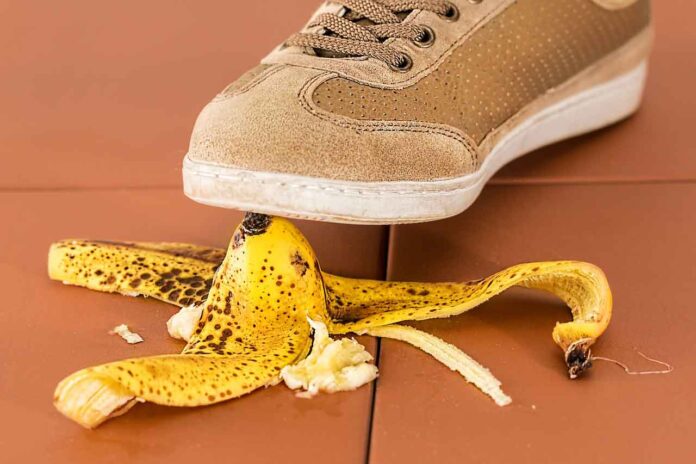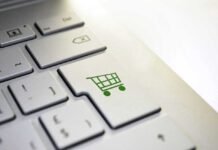As a business owner, ensuring the safety of your customers and employees is paramount. Slip and fall accidents are among the most common and potentially costly risks. These incidents can lead to serious injuries, lawsuits with the help of lawyers like Jeffrey W. Varcadipane, and damage to your reputation. You can significantly reduce the likelihood of such accidents on your premises by implementing proper prevention measures. This article will guide you through effective strategies to identify hazards, implement safety protocols, and create a culture of awareness in your organization. With these tools, you’ll be better equipped to protect your business and the people who frequent it.
Understanding Slip and Fall Hazards in Your Business
Slip-and-fall accidents can pose significant risks to employees and customers in any business environment. Recognizing potential hazards is the first step in preventing these incidents and maintaining a safe workplace.
Common Slip and Fall Culprits
Several factors can contribute to slip and fall accidents:
- Wet or slippery surfaces: Spills, recent cleaning, or weather-related moisture can create dangerous conditions.
- Uneven flooring: Cracked tiles, loose carpeting, or unexpected level changes may cause trips.
- Poor lighting: Inadequate illumination can obscure obstacles or changes in floor texture.
- Cluttered walkways: Obstacles in high-traffic areas increase the risk of accidents.
Industry-Specific Hazards
Different businesses face unique challenges:
- Retail: Display areas and checkout lines can become congested, leading to trip hazards.
- Restaurants: Grease spills and food debris create slippery conditions in kitchens and dining areas.
- Office spaces: Loose cords, open drawers, and improperly stored items can cause trips.
Understanding these hazards allows you to implement targeted prevention strategies. Regular risk assessments and employee training are crucial in identifying and mitigating potential dangers. By staying vigilant and addressing these issues promptly, you can significantly reduce the likelihood of slip-and-fall incidents in your business.
Proper Flooring Selection to Reduce Slips and Falls
Selecting the right flooring is crucial in preventing slip-and-fall accidents in your business. The appropriate materials can significantly decrease the risk of injuries while enhancing the overall safety of your premises.
Slip-Resistant Surfaces
Opt for flooring with high slip resistance, such as textured tiles, rubber, or non-slip vinyl. These materials provide better traction, especially in areas prone to moisture or spills. Consider using materials like stamped concrete or textured pavers for outdoor spaces, which offer grip even in wet conditions.
Maintenance-Friendly Options
Choose flooring that is easy to clean and maintain. Smooth, non-porous surfaces allow for quick cleanup of spills, reducing the likelihood of accidents. However, ensure these surfaces are not overly slippery when wet. Some options include:
- Epoxy coatings with added grit
- Polished concrete with non-slip treatments
- Commercial-grade carpeting in low-traffic areas
Appropriate Applications
Different areas of your business may require specific flooring solutions. For instance, kitchens and bathrooms benefit from slip-resistant tiles, while entryways might need moisture-absorbent mats. Consider each space’s unique needs to maximize safety without compromising functionality or aesthetics.
By carefully selecting and implementing the right flooring options, you can create a safer environment for employees and customers and minimize the risk of costly slip-and-fall incidents.
Keeping Floors Clear of Tripping Dangers
Implement a Clean-as-You-Go Policy
Maintaining clutter-free floors is crucial for preventing slip-and-fall accidents in your business. Implement a “clean-as-you-go” policy, encouraging employees to address potential hazards immediately. This proactive approach helps create a safer environment for both staff and customers.
Organize Storage Areas
Proper organization of storage areas can significantly reduce tripping hazards. Designate specific locations for equipment, supplies, and merchandise. Use shelving units and storage containers to keep items off the floor. Regularly audit these areas to ensure compliance with storage protocols.
Manage Cords and Cables
Loose cords and cables pose a significant tripping risk. Install cable management systems to keep wires organized and out of walkways. Use cord covers or tape them down securely when temporary cords are necessary. Train employees on proper cord management techniques to maintain a safe workspace.
Address Weather-Related Hazards
During inclement weather, take extra precautions to prevent slip and fall accidents. Place absorbent mats at entrances to collect water and debris. Use wet floor signs to alert people of potentially slippery areas. Establish a routine for monitoring and addressing weather-related hazards throughout the day.
Implementing these strategies can significantly reduce the risk of slip-and-fall accidents in your business, creating a safer environment for everyone.
Using Mats, Signs and Other Safety Tools
Strategic Placement of Floor Mats
Floor mats are your first line of defense against slip and fall accidents. Place high-quality, slip-resistant mats at all entrances to trap moisture and debris. Ensure mats lie flat and are secured to prevent tripping hazards. Use specialized non-slip mats designed for those environments in areas prone to spills or wetness, like kitchens or restrooms.
Effective Signage for Awareness
Utilize clear, visible signage to alert visitors and employees to potential hazards. “Wet Floor” signs are essential after mopping or in rainy conditions. Install permanent signs in areas with ongoing risks, such as “Watch Your Step” near slight changes in floor elevation. Use bright colors and simple graphics to ensure quick comprehension, even from a distance.
Additional Safety Tools and Techniques
Implement other safety measures to reduce risks further. Apply non-slip coatings or treatments to potentially slippery surfaces, especially in high-traffic areas. Install handrails on staircases and ramps for added stability. In outdoor spaces, ensure proper drainage to prevent water accumulation. Consider using textured floor tiles or anti-slip strips in areas prone to wetness.
Remember, consistency and proper maintenance are key to effectively using these tools. Regularly inspect and replace worn mats, update signage as needed, and continually assess your space for new potential hazards. Combining these safety tools with a proactive approach can significantly reduce the risk of slip and fall accidents in your business.
Establishing Procedures to Address Spills Quickly
Create a Spill Response Protocol
Implementing a robust spill response protocol is crucial for preventing slip-and-fall accidents in your business. Start by designating specific employees as “spill responders” and thoroughly training them on proper clean-up techniques. Ensure that spill clean-up stations are strategically placed throughout your facility and stocked with necessary supplies such as absorbent materials, mops, and caution signs.
Implement a “See Something, Say Something” Policy
Encourage all employees to report spills immediately, regardless of size or location. This proactive approach helps address potential hazards before they lead to accidents. Consider implementing a reward system for employees who consistently report and address spills promptly, fostering a culture of safety awareness.
Utilize Technology for Faster Response Times
Leverage modern technology to streamline your spill response process. Implement a digital reporting system that lets employees quickly notify the appropriate personnel of spill locations via smartphone apps or text messages. This real-time communication can significantly reduce response times and minimize the risk of accidents.
Regular Maintenance and Inspections
Conduct routine inspections of high-risk areas prone to spills, such as kitchens, bathrooms, and entrances. Regularly maintain floors and surfaces to ensure they remain slip-resistant. By staying proactive in your maintenance efforts, you can identify and address potential hazards before they escalate into dangerous situations.
Final Thoughts
As a business owner, preventing slip and fall accidents should be a top priority for protecting your customers and your company. You can significantly reduce risks and create a safer environment by implementing the strategies outlined in this article – from proper floor maintenance to hazard identification and mitigation. Remember to stay vigilant, conduct regular safety audits, and keep detailed records of your prevention efforts. These steps will help shield you from potential liability and dealing with lawyers like Jeffrey W. Varcadipane and demonstrate your commitment to customer safety. With a proactive approach to slip and fall prevention, you can ensure your business remains a secure and welcoming place for all who enter.








